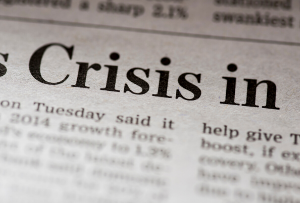
Crises in IR always come when they are least useful. And then also mostly unexpectedly and suddenly. As is currently the case due to Corona. Or they were already looming over a longer period of time, but there was simply not enough time to prepare sufficiently for the looming crisis. Because annual general meetings, analysts‘ conferences, annual reports, road shows, investor presentations, activist shareholders, investor targeting, quarterly and half-yearly figures, requirements of sustainability investors … all this ties up an enormous amount of time and attention. So it’s a good idea to think about how best to deal with an IR crisis in a calmer period: A crisis management plan is needed!
Aspects of a Crisis Management Plan
What is such a crisis management plan about? It is about establishing rules, processes, guidelines and organizational structures to be able to absorb an emerging crisis. It is about setting priorities. Because one thing that is not present in a crisis is time to think about priorities, procedures, processes & structures. All this should have been established before the crisis.
Typical Triggers of a Crisis in IR
What has typically triggered crises in IR in the past? In a survey conducted by IR magazine and IRInsight, 28% of companies said that crises in IR have been caused by global economic crises, general business problems (17%), disasters (7%), collapsing profits (7%), other financial problems (7%), hostile takeovers (5%), manager resignations (4%) or regulatory difficulties (3%)2. When is a crisis actually present? When private shareholders call in angry after a 10% drop in profits? When the press writes 1-2 negative articles about the change of CEO? When the share price collapses by 5% after regulatory difficulties become known? So, first of all, an analysis of possible risks should be carried out and it should be defined when from the company’s point of view a crisis exists in order to activate the crisis management plan. It is helpful here to define 2-3 different levels of a crisis and to adjust the planned measures to the respective level. For example, a level 1 crisis could be defined if the share price falls by more than 4% in one day and 3 important investors come forward. A level 2 crisis might be defined when the share price falls 7% and 5 angry investors are contacted and a level 3 crisis might be defined when the share price falls more than 13%.
Risk Prevention: Early Warning System for Risks
After the analysis and definition of possible crises, it is now clear what constitutes a crisis in your company. However: The best crisis is the one that does not break out: An early warning system for the defined risks is therefore useful – to be able to avert the looming crisis in the best case. Not all risks are foreseeable, but as far as foreseeable risks have been identified, they should be monitored. This applies especially to internal risks such as changes in management, financial results, strategy or even M&A. It is important that IR learns about such developments in the company at an early stage so that it can prepare for them. Especially in IR, communication within the company as well as with the capital market is a good risk prevention tool: Establishing and expanding distribution lists in order to reach the most important players on the capital market quickly during a crisis, maintaining close relations with the top 50 shareholders or monitoring capital market opinions.
The Crisis Team
Every crisis requires a crisis team and clearly defined tasks. Which departments should be on board in such a crisis team? Certainly IR, PR, Finance & Legal. What about other departments? Depending on the level of the crisis, it may make sense to keep the crisis team rather small in a level 1 crisis or to involve 5-6 departments in a level 3 crisis. Who will be the „Head of Crisis Management“? How are the hierarchies within the team and between departments to be regulated? Who can give instructions to which employees of which department? What functions, tasks and responsibilities do the individual departments have within a crisis? Which spokesperson should there be? What powers does the respective spokesperson have?
The Crisis Action Plan
After thinking about the structure of the team, the next step is to plan the activities to manage the crisis. The activities should not start with the onset of the crisis, but with the preparation for unspecific crises or the preparation for specifically expected crises (e.g. an expected drop in profits). During a crisis a press conference, conference calls with investors & analysts, Q&As, etc. can be a good starting point. Important: record who is responsible for which activity during the crisis. And: After the crisis is before the crisis: which processes worked well, what didn’t work at all? What changes should there be, which structures should be adapted in preparation for the next crisis?
